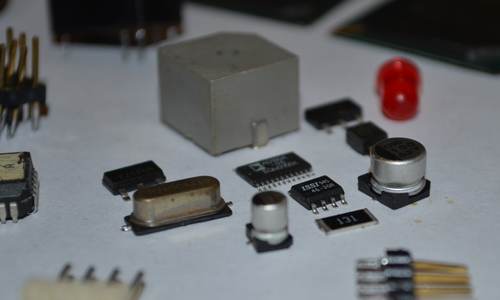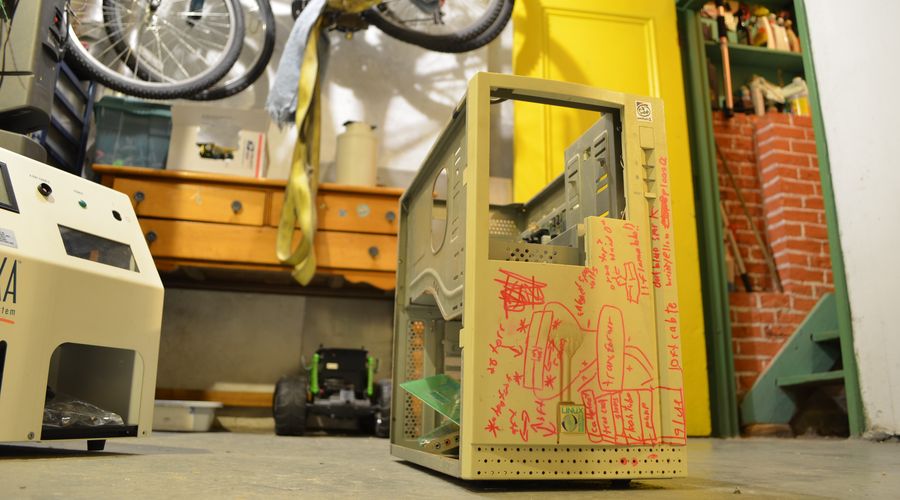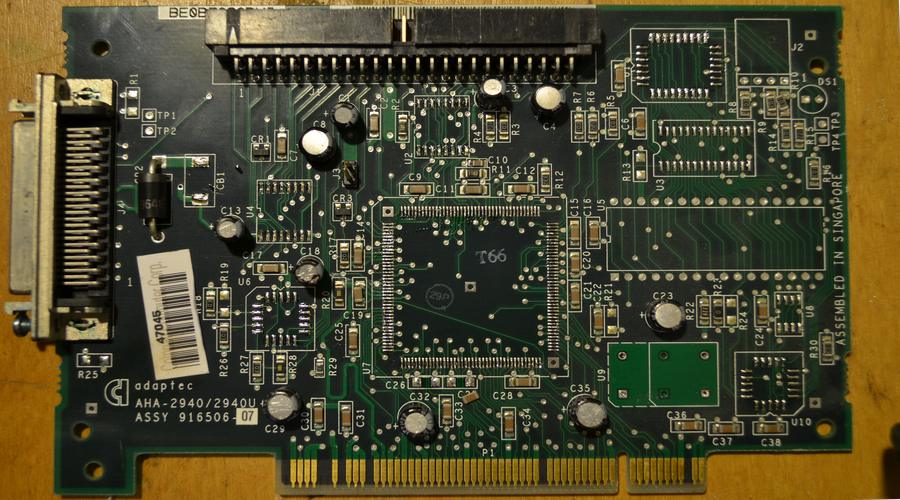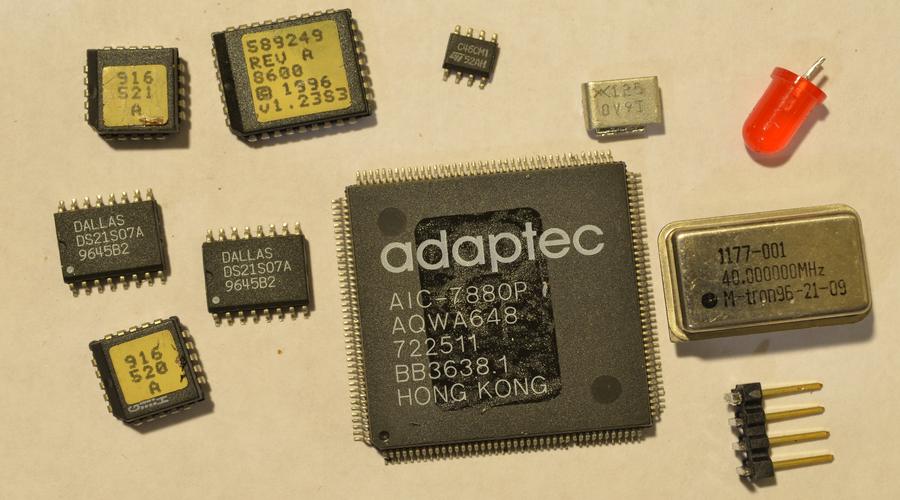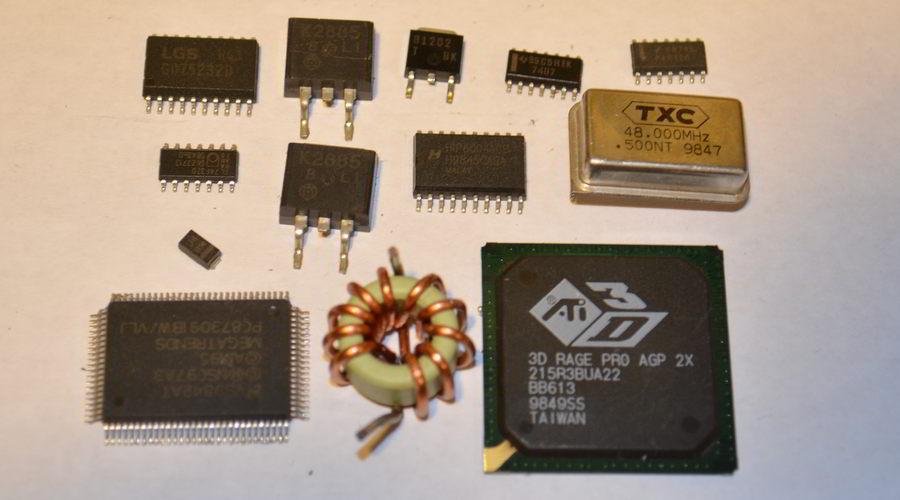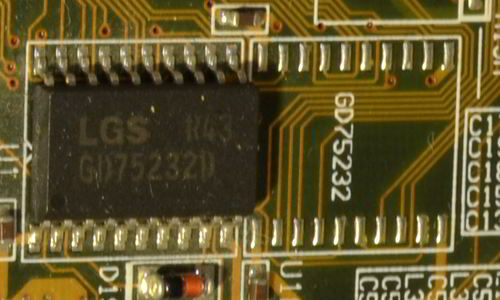Now a goodie, a large old motherboard. It was partially already de-soldered because a long time ago when I first got the hot air station I used this board to get an idea for what air pressure and temperature to use when hot air de-soldering, so a few IC's and connectors are already missing. The main purpose for getting parts from this motherboard was because it had large BGA's and even larger connectors, such as the PCI and ISA slots, all of which serve as a fantastic starting point for working with more difficult components.
In the end, I got two quad OR gate IC's, a 40 MHz oscillator, a switching voltage regulator with its two 30V 10 mOhm N channel Mosfets, an inductor, a integrated GPU, and a few other small stuff. Some of the chips I was not able to find much information on either because the chip did not have enough identification marks, the datasheet was proprietary information (ATI integrated GPU), or I just couldn't find the datasheet. It was still a good learning experience to de-solder all these IC's, and the voltage regulator is something I am excited to possibly use for any future projects.
As processors chug a large amount of power, even the old Pentium 2's, a voltage regulator is needed on the motherboard. Using a linear voltage regulator would be extremely inefficient because these processors are designed to operate at under two volts while pulling a large amount of current, upwards in the 20's. Somewhat recent processors, such as the Q6600 or Pentium 4 required from 60 to 100 amps at a voltage of 1.4 when running at stock. A linear voltage regulator would have to take the lowest voltage rail with a large amount of current capability, such as the 12v rail, and then have to lower that to 1.4 volts while supplying 60 amps, effectively turning it into a nice space heater. Due to this, buck switching voltage regulators are used, which have a much larger efficiency at large currents than linear voltage regulators, often times running with multiple phases to give the lowest voltage ripple, faster response time to constantly changing current demands, less strain on each inductor and mosfets, and power dissipation being more spread out.
In this case, it is a single phase, synchronous, buck switching converter. The large amount of capacitors are for keeping the voltage ripple as low as possible, and acting as decoupling capacitors for the processor located in the green slot towards the top. Generally, as the current demand increases, voltage ripple required to be lower, or switching frequency is lower, the amount of capacitance needed increases. The copper wire looped around a gray ring is used as the inductor for the switching converter.
This being a switching synchronous buck voltage regulator means it uses two mosfets (2SK2885), often two N-Channel mosfets, as the switches to connect ground and VSS to the inductor. These mosfets must have low RDS-ON (resistance when fully on) and low gate capacitance to decrease transition times to keep power dissipation as low as possible, especially when dealing with such a large amount of current. You can easily see which of the pins are the gates for each mosfet by the thin trace connected to it.
The voltage regulator (HIP6004A) is a normal run of the mill chip in this category except for one item. You can control the output voltage using voltage identification pins. These are five pins which are pulled up or down, controlling what voltage the internal DAC creates, which is then sent to a comparator, basically determining what output voltage you want. Five pins allow for 32 steps between two voltages, with the ten lowest steps disabled, enabling you to control the voltage in 0.1v steps for 2.1v to 3.5v, and .05v steps for 1.8v - 2.05v.
The GD75232D is a RS-232 transceiver, containing transmitting and receiving drivers. It is used for translating the voltage between the external RS232 12v bus and the internal, much lower voltage bus, as providing protection against ESD and noise on the external bus entering the very delicate circuits of the computer. Not much else needs to be said about this IC. Drivers and receivers are commonplace for external buses, and can be found on every computer which employs such buses.
Looking closely, you can spot a second spot for another transceiver not occupied. This is a sign that this board may have had different versions being sold using the same PCB in order to save costs, with one of the differentiators being more serial ports. This can be seen in nearly all electronics today, such as phones being shipped with different amounts of storage for different prices but otherwise remaining identical.
The TL74F32D is a quad OR gate logic IC. Not much to say since this is a standard logic chip, it runs on five volts, and the datasheet has only three pages for the actual ic itself, with the remaining three pages either mostly empty or meant for sale information. You ca spot the decoupling capacitor on the left of the IC.
TO BE CONTINUED
